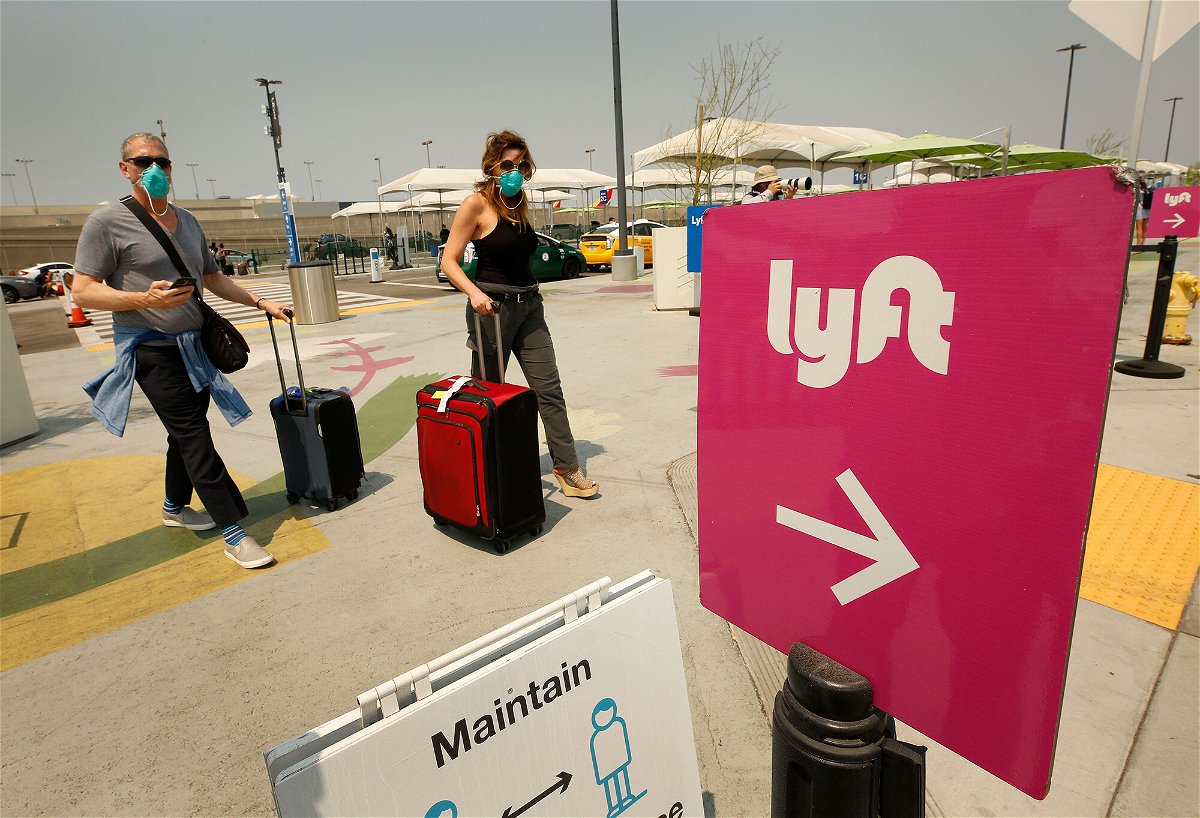Lyft is bringing back a version of shared rides

Lyft is now slowly bringing back a revamped shared rides option.
By Sara Ashley O’Brien, CNN Business
Shared rides were a key part of how the founders of Uber and Lyft envisioned disrupting transportation. Back in 2014, the companies raced each other to be first to announce their carpooling options, with the promise of creating a more efficient service that’s also more affordable for riders.
Then the pandemic hit, and the companies swiftly suspended their shared offerings to help curb the spread of Covid-19.
Roughly 16 months later, Lyft is now slowly bringing back a revamped shared rides option. But as it does, it must confront shifting public health concerns as well as financial risks that predated the pandemic. (When asked by CNN Business about its plans for shared rides in the US, an Uber spokesperson said the company will “explore re-launching Pool when the time is right and will follow the guidance of health experts.”)
Lyft said Thursday it will restart the option beginning July 19 in three markets — Chicago, Denver and Philadelphia. Riders will have three shared rides options, which will be tiered by wait time and have upfront pricing assigned to each: 15-30 minutes, 5-15 minutes, and less than 10 minutes. The longer the wait, the more discounted the ride.
“As the country reopens, we want our most affordable ride option to be available to our riders,” Lyft president and cofounder John Zimmer said in a statement.
Additionally, Lyft said it has added “no surprise pickups” labels on certain shared rides. Those routes will be fixed with no added stops while en route, a factor that will contribute to a more accurate estimated arrival time for riders, the company said.
The company said it determined which markets to reintroduce shared rides in based on rider demand and driver supply. It expects to eventually add the service to all of the nearly 20 markets where shared rides were offered pre-pandemic.
There are some new precautions in place: Lyft riders can only book a single seat (meaning no guests), front and middle seats must be unoccupied, and masks are required for riders and drivers, as with its regular service.
Health concerns aside, the notion of shared rides could also help the ridehail companies with another pressing issue: an ongoing driver shortage just as the US economy broadly opens up. It’s a basic supply-and-demand problem: costs tend to be higher for consumers when fewer drivers are on the road. Given those costs, some users may wish to take advantage of more budget-friendly ride options.
But pooling only works financially at scale. In its IPO paperwork, Lyft warned about failing to effectively match riders among its risk factors — if a rider who selected a shared ride, for example, isn’t paired with another person, the rider still gets the discounted rate and the driver still gets paid a fixed amount. The company, however, would make less on the ride than it had expected because it did not match another rider. The new offering still leaves open this possibility, though the longer wait times give Lyft more opportunities to pair riders.
Even before the pandemic, it’s clear pooling wasn’t where the companies wanted it to be. Lyft’s chief financial officer disclosed on a 2020 earnings call that shared rides made up 17-18% of overall rides in the third and fourth quarter of 2019. The company once said it wanted shared rides to make up 50% of its business by the end of 2020.
Uber CEO Dara Khosrowshahi, on a call to discuss the company’s third quarter 2019 earnings, noted the company was “losing significant sums” on shared rides due to discounting in order to incentive use of the service. “The product and technology teams are much more focused on driving shared ride efficiency,” Khosrowshahi said. He added that newer additions such as Express Pool, where riders walk to a destination for pickup, intended to lower costs organically rather than relying on artificial price discounts.
“They had to subsidize [shared rides] heavily in order to make it work at all, even at a modest scale,” said Bruce Schaller, a transportation consultant and a former New York City transportation official who has researched the effectiveness of Uber and Lyft shared services in reducing vehicle miles traveled in four cities. “They were cutting back on the financial incentives to both drivers and passengers pre-pandemic and I’d be very surprised if they put those back in place.”
The companies, which both went public in 2019, have reiterated to investors that, after years of bleeding money, they expect to be profitable, excluding certain expenses, by the end of this year. Over the years, the companies have largely prioritized growth over profits.
As Schaller points out in his research, data released by New York City and Chicago indicate declining pooling rates “apparently in concert with reduced fare discounts after Uber and Lyft’s 2019 IPOs.” (Lyft said it expects its improvements to shared rides to lead to more bookings and lower prices.)
While Uber may not be bringing back shared rides in the United States yet, the company relaunched a version of Pool in Australia’s Perth and Sydney markets this year. To minimize detours and wait times, at times riders are asked to walk to or from a pickup location.
In the meantime, riders in the United States can hack their own version of pooling by picking up a friend or two by adding stops or splitting the fare — which runs a $0.25 fee, Uber pointed out. Lyft does not have a split fare option.
The-CNN-Wire
™ & © 2021 Cable News Network, Inc., a WarnerMedia Company. All rights reserved.